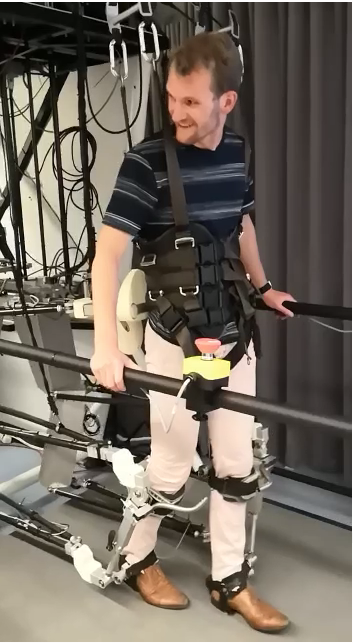 As part of the Biomechatronics course a project was done. Our project group chose to work on a project related to the LOPES II, a gait-assistance device, which can be used for rehabilitation after for instance a stroke. The goal of our project to provide an assistive force during walking gait at the knee in order to walk more efficiently. This goal was divided into two parts: Gait determination and gait assistance.
As part of the Biomechatronics course a project was done. Our project group chose to work on a project related to the LOPES II, a gait-assistance device, which can be used for rehabilitation after for instance a stroke. The goal of our project to provide an assistive force during walking gait at the knee in order to walk more efficiently. This goal was divided into two parts: Gait determination and gait assistance.
In order to determine the gait, we looked at the hip joined. We used experiment data of the hip joint angle to fit a curve to a regular gait pattern, this could then be used during testing to determine the gait phase (in percentage) and its derivative in real-time. This could then be used as input for the gait assistance.
As with the gait determination, first experimental data was used to fit a curve to the knee joint angle during a regular walking gait. However, now the found gait percentage was used to determine what torque should be applied to the knee joint.
Unfortunately, proving that the controller aided the user was outside of the scope of this project due to time constraints. However, user reviews stated that they did feel helped by the system as compared to having the system in “Free Mode”.